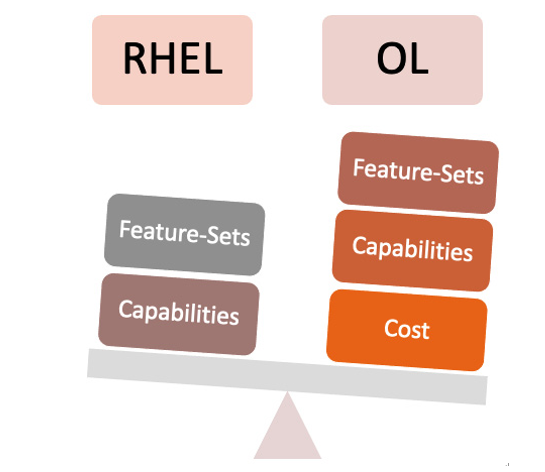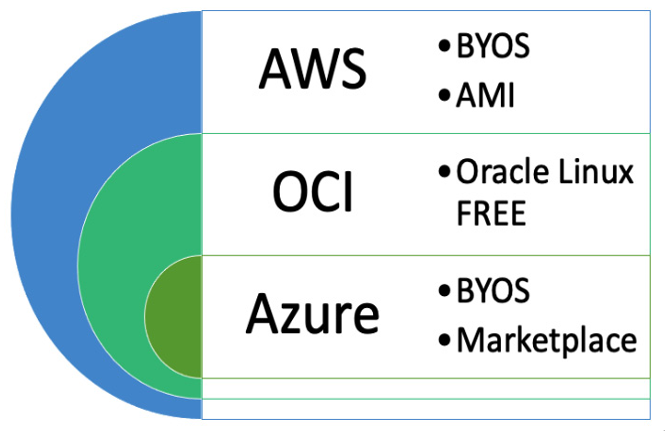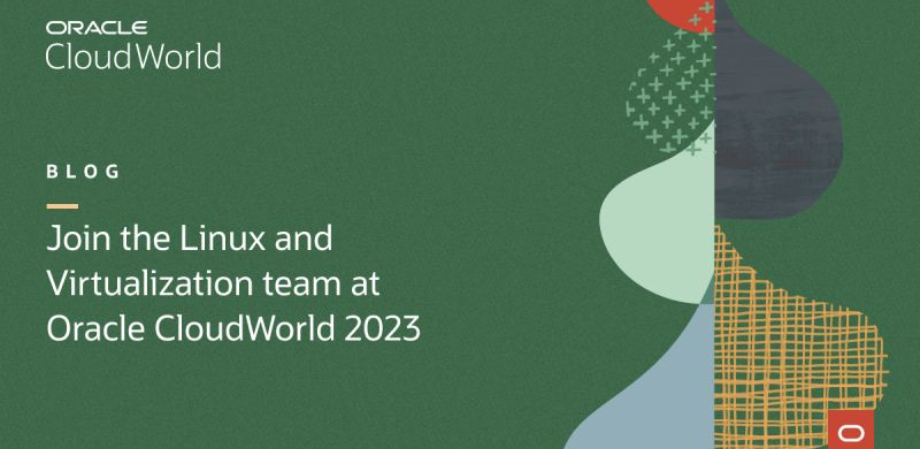Oracle Linux in the cloud – Let’s All Go to the Cloud
Oracle Linux in the cloud
We could list all the CSPs here and break apart their pros and cons, but ultimately, every CSP has a main competency. What Oracle Linux does is add to that competency, making the product stronger and more versatile. Much like any other (open source) Linux distribution, Oracle Linux is a versatile and powerful OS. In the case of Oracle Linux, the OS was designed with elements that are compatible with RHEL, not to compete, but to add functionality as well as a portal into Oracle functionality beyond RHEL.
The fluidity of Oracle Linux, much like RHEL, allows it to go beyond just being an OS. Oracle Linux extends the playing field, maximizing the Linux toolsets surrounding virtualization into VM management through Oracle Linux Virtualization Manager (OLVM), cross-functionality into cloud platforms, and automation, just to name a few. What Oracle aims to do is to offer the functionality of an RHEL OS but go beyond that and tie that OS into a global business network of toolsets to drive business success. Now, after all the fluff comes the real power and versatility of Oracle Linux, some of which was mentioned at the beginning of this chapter. This recipe is about which CSPs are most compatible with Oracle Linux; however, understanding what and how the OS operates is integral to understanding which CSPs are more compatible with Oracle Linux and thus maximizing its capability.
Oracle supports and promotes open source technologies for business-critical environments. Oracle is a founding member of the Linux Foundation, Eclipse Foundation, and Java Community Process, and contributes significantly to open source projects. Oracle software combined with open source technologies offers high performance, reliability, and data security while reducing computing costs.
The following diagram provides a cost-benefit analysis of Oracle Linux “Free” (the only paid component is support) versus RHEL with the extended features added on, as mentioned previously.

Figure 13.1 – RHEL versus Oracle Linux
As with any Linux distribution, each CSP has its own flavor or choice of Linux platform. For instance, AWS has Amazon Linux 2 (AL2), Azure offers compatibility with anything RHEL or Ubuntu based, and Oracle has Oracle Linux, of course. There are so many differences between Ubuntu and Oracle Linux, AL2, and so on, but we’re not here to discuss the differences. Ultimately, all CSPs can run Linux distributions, but not all are optimized for Oracle Linux. With AWS and Azure, you have the option of Buying Your Own Support (BYOS) from Oracle (support includes access to patching, upgrades, and OS support) or using these services for free without tech support. With OCI Premier, support is included for free. The following diagram shows the main CSPs and their differing adoptions of Oracle Linux.

Figure 13.2 – Cloud options
Who’s the fairest of them all? Let’s walk through what Linux distributions are offered within AWS. We’ll briefly touch on AWS EC2 Image Builder to visualize the versatility of Linux within any environment on AWS and beyond. This will come into use later in this chapter, in the Using VirtualBox to springboard VMs to OCI recipe.
